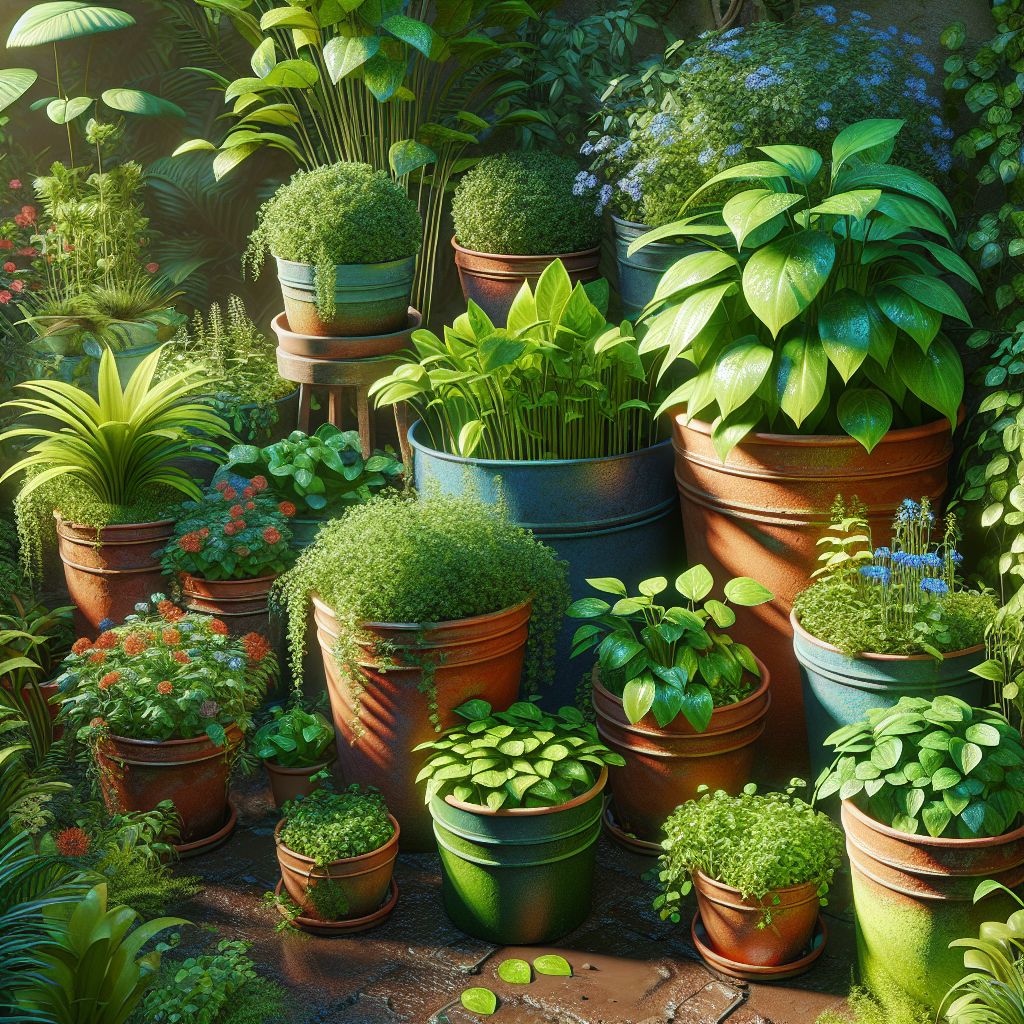Thriving Green Spaces in Limited Areas with container gardening
In today’s urbanized world, where space is a luxury and green landscapes are diminishing, the appeal of gardening remains ever strong. Container gardening has emerged as a solution for city dwellers and those with limited outdoor space to create lush, thriving green spaces. Whether you live in a tiny apartment or have a small patio, container gardening allows individuals to cultivate a variety of plants, transforming balconies and rooftops into verdant sanctuaries.
The Appeal of Container Gardening
Container gardening is celebrated not only for its space efficiency but also for its versatility and accessibility. Here’s why it stands out:
- Space Efficiency: Containers can be placed almost anywhere—balconies, windowsills, staircases, or rooftops—making it ideal for urban settings.
- Mobility: Plants in containers can be easily moved, allowing better control over sunlight exposure and weather conditions.
- Soil Control: Gardeners can tailor the soil mix to suit the specific needs of different plants without worrying about the existing ground soil quality.
- Pest Management: Containers offer an added layer of protection against pests compared to traditional gardens.
- Accessibility: For individuals with mobility issues or limited physical capabilities, container gardens can be adjusted to accessible heights.
Choosing the Right Containers
The success of container gardening heavily relies on selecting appropriate containers. Several factors should be considered:
-
Material: Containers come in various materials like plastic, terracotta, ceramic, and metal. Each has its pros and cons; for instance:
- Plastic: Lightweight and affordable but may degrade under prolonged sun exposure.
- Terracotta: Aesthetic appeal but can dry out quickly as they are porous.
- Ceramic: Attractive and retains moisture well but heavy and fragile.
- Metal: Modern look but can heat up quickly affecting root health.
-
Size: Adequate space is essential for root growth; therefore, selecting the appropriate size based on plant type is crucial. Larger containers reduce watering frequency by retaining more moisture.
-
Drainage: Good drainage is non-negotiable. Ensure that your containers have sufficient drainage holes to prevent waterlogging which could lead to root rot.
Best Plants for Container Gardening
Not all plants thrive equally in containers; thus choosing species suited for limited root space is key:
-
Vegetables & Herbs:
- Tomatoes
- Peppers
- Lettuce
- Spinach
- Basil
- Mint
-
Flowers & Ornamentals:
- Petunias
- Geraniums
- Marigolds
- Zinnias
- Begonias
-
Fruits:
- Strawberries
- Dwarf citrus trees (lemons, limes)
-
Cacti & Succulents:
These are excellent choices due to their low maintenance and minimal water requirements. -
Perennials & Shrubs (Dwarf varieties):
Ideal for creating lasting greenery without replanting annually.
Soil Mixes & Fertilization
The success of container gardening also hinges significantly on soil quality:
- Use high-quality potting mixes instead of garden soil which may compact over time causing poor aeration.
- Potting mixes often incorporate peat moss or coconut coir (for moisture retention), perlite (for aeration), and compost (for nutrients).
Containers leach nutrients faster than ground beds hence regular fertilization is essential:
- Use slow-release fertilizers at planting time supplemented with liquid fertilizers during growth periods.
- Organic options like compost tea or fish emulsion provide nutrients while being environmentally friendly.
Watering Techniques
Proper watering practices ensure healthy plant growth:
-
Water thoroughly until it drains out from the bottom holes—this ensures deep root penetration rather than shallow watering which promotes weak roots.
-
Frequency depends on plant type; succulent needs differ from those in vegetable crops whose thirst varies widely depending on weather conditions too.
-
Self-watering containers or drip irrigation systems can simplify maintenance especially during busy seasons or vacations away from home.
Light Management
Light requirements vary among plants so understanding their needs helps optimize placement within your living spaces:
1 “Full sun” species need at least six hours directly – place these towards southern-facing exposures where possible;
2 Partial shade-tolerant varieties thrive under four hours only direct exposure making them suitable east/west sides respectively;
3 Complete shade lovers flourish even minimal indirect light perfect northern facing indoors amenities etc;
Artificial grow lights supplement natural deficiencies winter months ensuring continued productivity year-round!
Vertical Gardening & Layering Techniques
Vertical techniques maximize limited floorspace by utilizing walls trellises hanging baskets etc creating multi-dimensional gardens beautifully packed flourishing layers without crowding issues prevalent flat surface-spaces often face traditionally;
Conclusion
Container-gardening offers flexible creative fulfilling options allowing anyone anywhere engage passion cultivating personal greenery oases even minimalistic settings contrary belief restrictions equate wasteland reality abundance beauty indwells smallest corners imagination willing! With careful planning informed choices right tools techniques will find thrive amidst constraints proving truly indeed less more!













